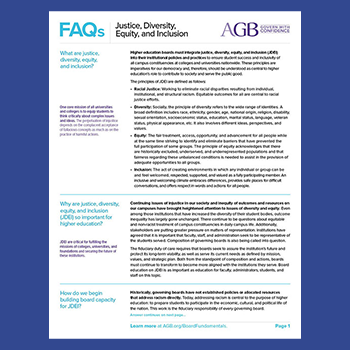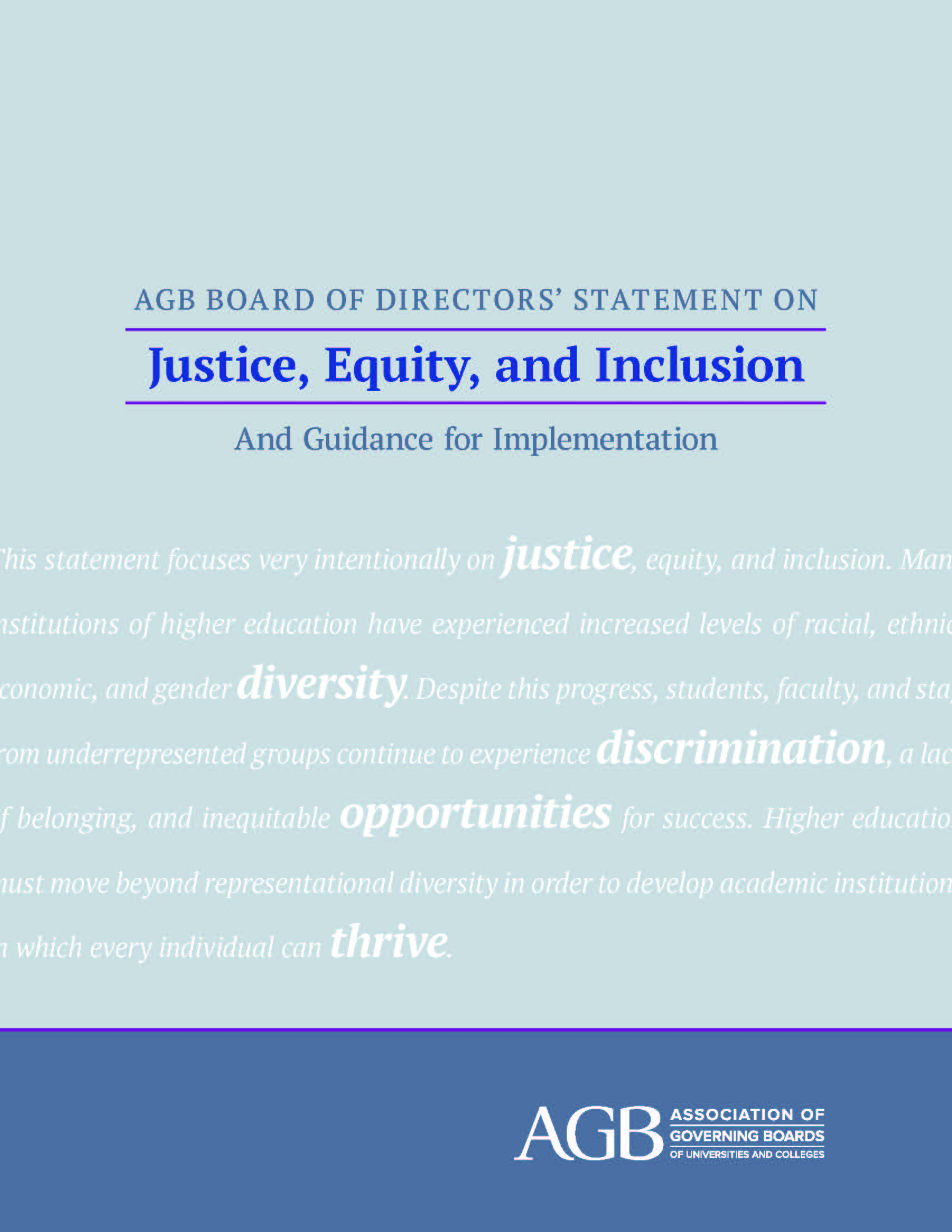Why this is important.
When everyone in higher education has the opportunity to thrive, institutions and the public good reap the rewards. Inclusive excellence is a framework that fosters opportunity for all. It addresses barriers that disadvantage any group, push away talented faculty members and staff, or impede student success.
Boards are uniquely positioned to ensure their institutions support the success and well-being of students, faculty, and staff. The framework of inclusive excellence can inform discussion inside the boardroom and throughout the campus community.
A board commitment to inclusive excellence should include all aspects of activities from investment decisions to budgets to academic programs. Boards need to study and address aspects of their history that conflict with the institution’s values today. They also need to evaluate the current commitment and climate regarding inclusive excellence on campus, assess inequities, establish goals, determine metrics to measure progress, and provide needed resources. The board can, through policies, strategic priorities, oversight, and declarations, advance fairness and success, and the missions of their institutions.
Questions for boards.
Click below to reveal key questions for your board to consider:
Policies
Consequential Questions:
- Does your current mission statement reflect your institutional commitment to inclusive excellence?
- Has the board conducted a policy audit to assess relevance and impact of key policies on different campus populations?
- What inclusive excellence policies and practices have your board and campus leaders successfully enacted? Which ones were unsuccessful?
Data
Consequential Questions:
- Does the board receive data on students, faculty, and personnel on key performance indicators disaggregated by race, ethnicity, and gender that allow the board to understand and assess equity?
- Does the board have clear goals and benchmarks in place for measuring inclusive excellence? Does this include baseline campus climate measures?
Strategic Priorities
Consequential Questions:
- Do you have in place an academic program review related to inclusive excellence? Have you linked inclusion and quality in these assessments?
- Have the board and administration examined the history of the institution in terms of inclusive excellence and how to achieve success for this goal?
- Have the board and administration reviewed the physical growth and presence of the institution in its community to assess its impact on communities of color or disenfranchised communities?
- How diverse is your board? What perspectives are missing from the table and how can the board be more inclusive? How are potential new board members identified?
- Has the board conducted a skills and perspective gap analysis of its members based on strategic planning and inclusive excellence?
- Are your students able to equitably access all opportunities your institution has to offer?
- Has the board made the elimination of gaps in student success by race and gender a priority and committed adequate resources to this goal?
- Has the board reviewed its investments and investment managers from an ESG/inclusive excellence perspective?
Recommended resources.
We carefully curated these staff-picked resources for you:
Strategic Board Leadership for Justice, Equity, and Inclusion
Podcast
Featuring Shauna Ryder Diggs, Leo M. Lambert, and Henry Stoever
Diversifying the Governing Board
2024
AGB














